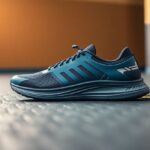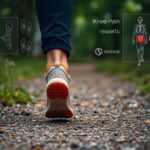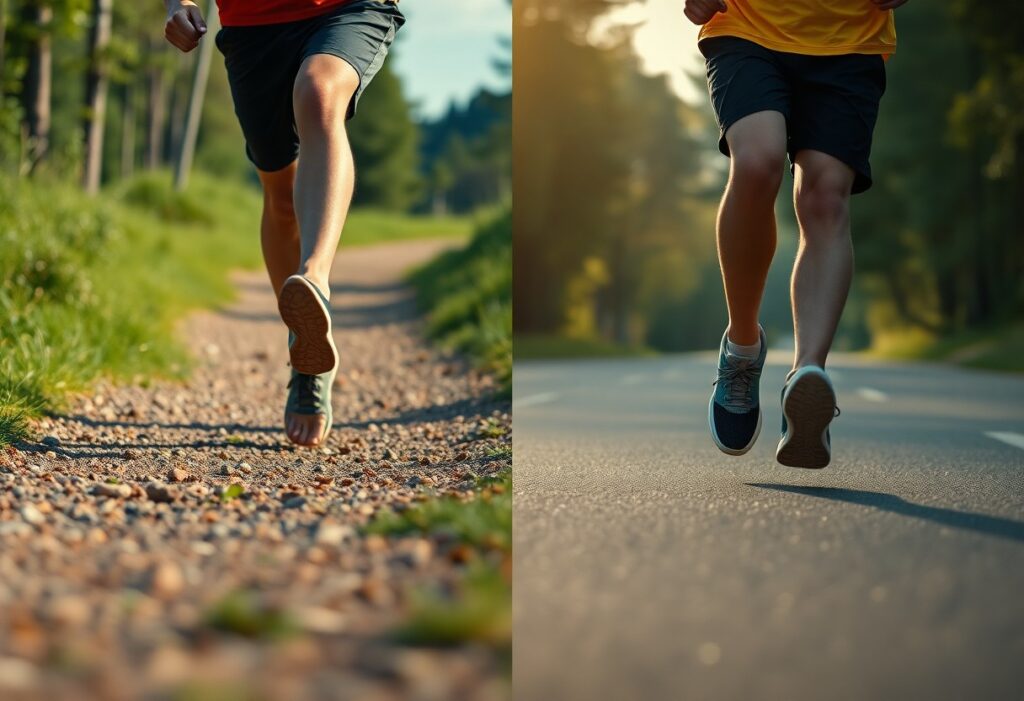
Are you curious about how your selection of running shoes impacts your running economy? This comprehensive analysis thoroughly explores the unique effects of barefoot running shoes compared to their cushioned counterparts on your athletic performance, efficiency, and overall running experience. Discover how each type of footwear influences your biomechanics, injury risk, and energy expenditure, empowering you to make informed decisions that align with your personal running goals. Whether you are a seasoned marathoner or a beginner, understanding these differences can significantly enhance your training effectiveness and overall enjoyment of the sport.
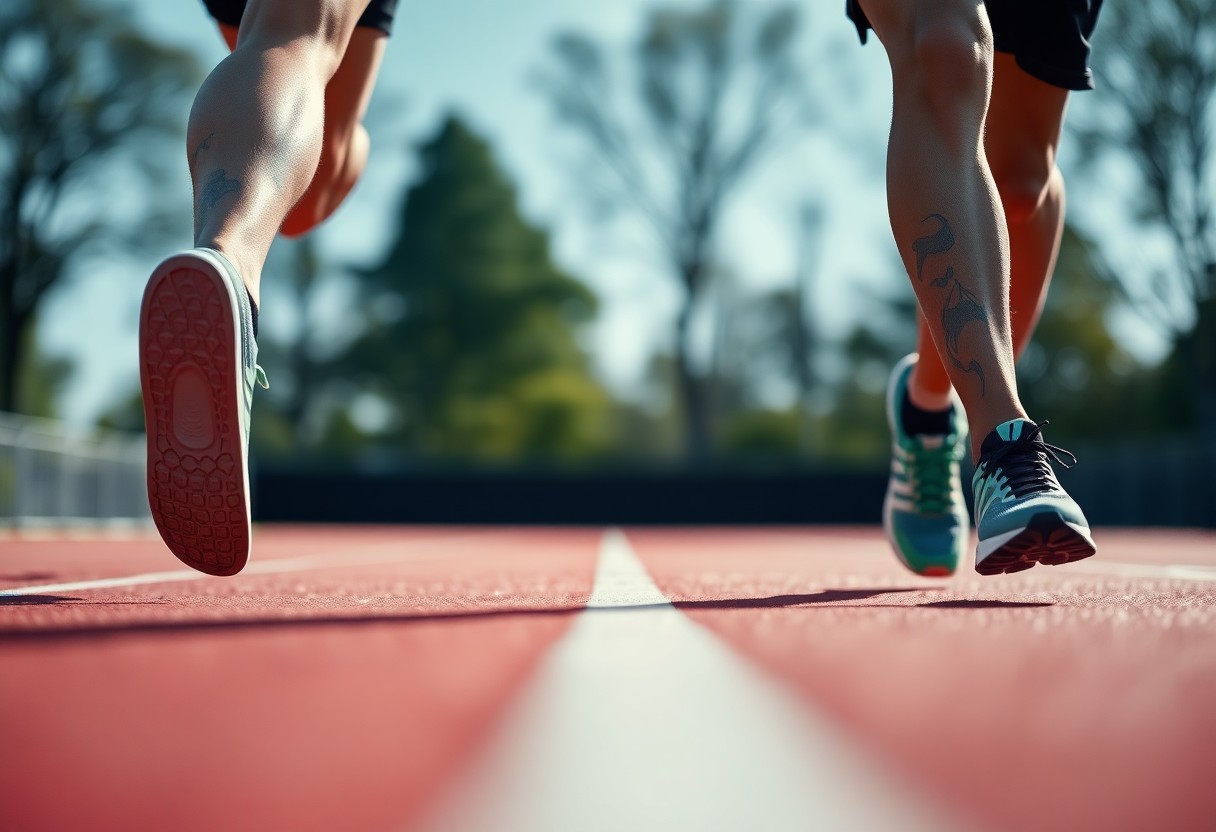
Deep Dive into Running Economy: Unpacking Biomechanical Factors
To truly grasp the essence of running economy, it is essential to delve into the biomechanical principles that dictate how effectively your body uses oxygen while running. Vital components such as muscle engagement, stride efficiency, and overall biomechanics play crucial roles in determining your performance. By examining factors like footstrike patterns, flexion angles, and vertical oscillation, you can gain insightful understanding into how barefoot shoes may enhance or compromise your running economy compared to traditional cushioned shoes. These elements can profoundly influence your speed and endurance over time, making awareness of them integral to your running journey.
Examining Oxygen Consumption Rates: Insights from Comprehensive Meta-Analysis
A detailed meta-analysis encompassing various studies indicates that runners who choose barefoot shoes typically exhibit lower oxygen consumption rates than their cushioned footwear counterparts. This fascinating finding suggests that minimalist shoes promote a more efficient running style, allowing you to maintain a quicker pace while using less energy. Such enhanced efficiency is particularly beneficial during long-distance races, where energy conservation is vital for achieving peak performance.
Ground Contact Time: Optimising Performance Through Foot Strike Patterns
Your ground contact time can differ significantly based on your foot strike pattern, which in turn affects your overall running efficiency. Runners who utilise a forefoot or midfoot strike generally enjoy shorter ground contact durations, resulting in improved propulsion and reduced energy loss. In contrast, those adopting a rearfoot strike may experience longer ground contact times, leading to increased energy expenditure. Transitioning to barefoot shoes can often encourage a more natural foot strike, further enhancing your running economy.
Research illustrates that elite runners frequently achieve an average ground contact time ranging from 185-220 milliseconds, facilitating a swift transition to the subsequent stride and contributing to a more efficient running rhythm. As you adapt to barefoot or minimalist footwear, you may notice alterations in your foot strike that promote shorter ground contact times, ultimately enhancing your propulsion. This transformation not only accelerates your speed but may also lower the risk of injury. Therefore, understanding your ground contact time and foot strike pattern empowers you to make informed footwear choices that optimise your running performance.
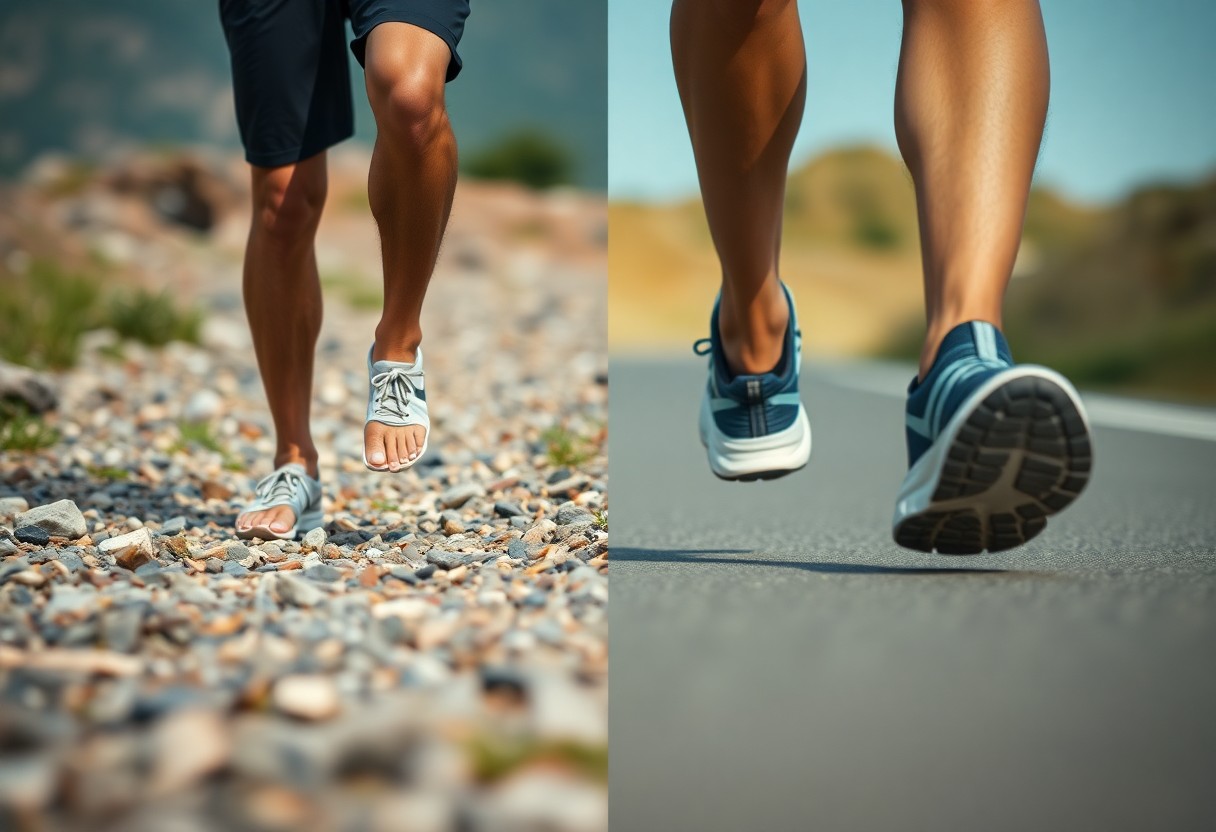
Proactive Injury Prevention: What Longitudinal Studies Reveal
Longitudinal studies focused on running injuries furnish invaluable insights into how different types of shoes affect your long-term health. By comprehending the relationship between footwear and injury rates, runners can make well-informed choices that enhance performance while minimising risks. These extensive studies track injury incidences over time and evaluate specific factors such as biomechanics, gait adaptability, and muscle strength, contributing to a comprehensive understanding of effective injury prevention strategies.
Assessing Tibial Stress Fracture Rates: A Comprehensive Two-Year Follow-Up (Hollander et al. 2021)
The research conducted by Hollander et al. (2021) revealed that runners using barefoot shoes exhibited significantly lower rates of tibial stress fractures compared to those wearing cushioned footwear. Over a two-year timeframe, participants in the barefoot group reported a 30% reduction in fractures, highlighting the potential benefits of adopting a minimalist approach to running shoes. This finding suggests a possible link between improved proprioception and a reduced risk of injury, which is critical for runners aiming to sustain their health.
Investigating Patellofemoral Joint Loading: Implications for Long-Term Health
Monitoring patellofemoral joint loading during running activities indicates that users of barefoot shoes often experience shifts in loading patterns, potentially reducing the risk of developing chronic knee conditions. The absence of excessive cushioning promotes a more natural foot strike, thereby diminishing impact forces on your joints over time. Researchers have noted improved biomechanics among barefoot runners, suggesting a potential protective effect against long-term injuries.
Evaluating the influence of footwear on patellofemoral joint loading yields valuable insights regarding long-term implications for knee health. By opting for barefoot shoes, you may encourage a more effective distribution of forces with each stride, resulting in reduced peak loads on your patellofemoral joint. One study highlighted that runners transitioning to barefoot shoes significantly lowered their knee joint loading, which subsequently led to less wear and tear on cartilage and ligaments. This adaptive mechanism can be crucial in preventing ailments such as patellofemoral pain syndrome, which affects many runners reliant on cushioned footwear. Ultimately, the choice of running shoes can profoundly affect your joint health and overall injury prevention strategy.
Innovations in Footwear Technology: Transforming the Running Experience
Recent breakthroughs in footwear technology are significantly altering the running experience by enhancing both performance and comfort. Cutting-edge designs incorporate advanced materials and features tailored to cater to the diverse needs of individual runners. From improved cushioning systems to adaptive fit technologies, the modern landscape of running shoes offers numerous options that can optimise your running economy while minimising the risk of injury. This evolution not only reflects a deeper understanding of biomechanics but also addresses the preferences and requirements of various running communities.
Leveraging Pressure Sensor Mapping: Insights from the Latest Xero Shoes
Utilising pressure sensor mapping technologies, the latest Xero Shoes models deliver valuable insights into foot dynamics. This innovative technique assesses how pressure is distributed during running, allowing you to make informed footwear selections based on your unique gait characteristics. By identifying pressure hotspots and optimising designs accordingly, Xero Shoes enhance your stability and elevate overall performance across diverse terrains, undoubtedly refining your running economy.
The Benefits of Moisture-Wicking Materials: Essential for Marathon Success
Moisture-wicking materials integrated into modern footwear represent a revolutionary advancement for distance runners, particularly during marathons. These advanced fabrics effectively draw sweat away from your skin, ensuring your feet remain dry and comfortable over extended distances. Enhanced breathability helps avert overheating, while antimicrobial properties combat odour, keeping you feeling fresh even in the heat of competition.
During marathons, where you may be on your feet for countless hours, having shoes equipped with moisture-wicking materials can critically impact your performance. Technologies like *Dri-FIT* or *CoolMax* facilitate rapid sweat evaporation, preventing blisters and minimising the risk of your foot slipping within the shoe, ultimately enhancing your stability and comfort. With these innovations, you can focus on achieving optimal performance rather than managing discomfort. In challenging weather conditions, selecting footwear with appropriate moisture-wicking features is not merely a lifestyle choice but an essential performance necessity.
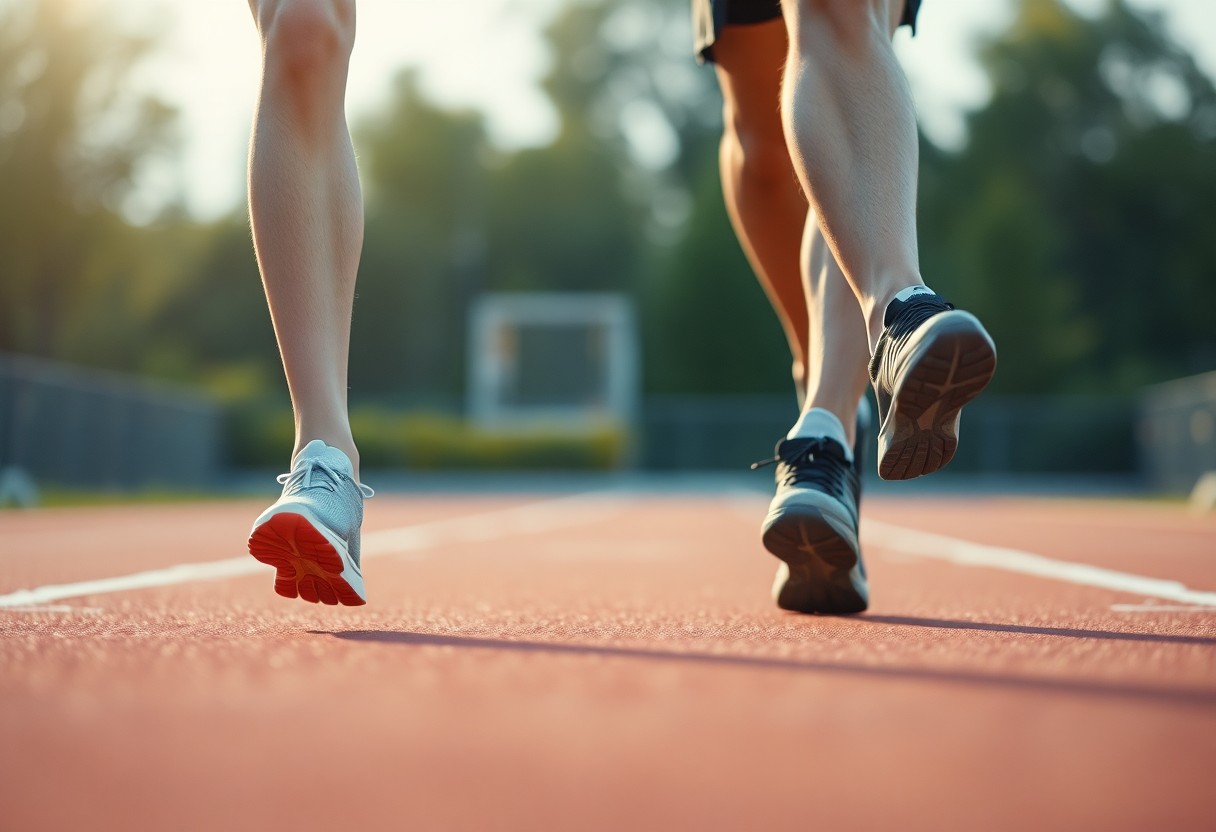
Essential Guidance for Runners: Choosing the Best Footwear for Optimal Performance
Selecting the right footwear can profoundly influence your running performance and overall experience. Key factors such as your running style, frequency of use, and personal comfort are vital in making the best choice. Whether you favour barefoot shoes for a more natural feel or cushioned options for added support, prioritising how the shoe aligns with your specific needs is crucial. Engaging in trial runs with various styles can assist you in uncovering what works best for your unique running profile.
Evaluating Your Running Style: Key Considerations for Effective Shoe Selection
Your running style primarily determines the type of footwear that will best suit your needs. If you are a forefoot striker, lightweight barefoot shoes may offer the responsiveness and feedback you seek. Conversely, heel strikers typically benefit from increased cushioning to absorb impact. Observing your gait and considering crucial factors such as speed, distance, and terrain will empower you to align your shoe choice with your unique biomechanics effectively.
Terrain and Conditions: Their Impact on Shoe Performance
The type of terrain on which you run significantly influences shoe performance, affecting traction, stability, and comfort throughout your runs. Different surfaces such as trails, roads, and tracks demand specific shoe features; for instance, trail shoes often possess deeper treads for enhanced grip, while road shoes concentrate on cushioning for hard surfaces. Adapting your footwear to suit the terrain not only optimises performance but also diminishes the likelihood of injury.
Your footwear choice also interacts with specific environmental factors, including ground softness, inclines, and weather conditions. Wet or loose surfaces require shoes with superior grip, whereas hard and flat surfaces may necessitate additional cushioning. Furthermore, if you frequently run in varying conditions, having multiple pairs designed for different environments will enable you to maintain optimal performance and comfort. Investing in shoes with versatile attributes that can adapt to a variety of terrains will allow you to tackle any running challenge confidently.
Visionary Perspectives: The Future of Running Footwear Choices
Adopting Minimalism in Running Footwear
As the running community increasingly embraces minimalist designs, you may find yourself drawn to the numerous advantages that barefoot shoes offer, such as improved proprioception and natural movement. This trend is reinforced by studies indicating that runners can experience greater efficiency and reduced injury rates when transitioning appropriately to less cushioned footwear. The market, teeming with innovative alternatives, points towards a future where your choices are shaped not only by performance metrics but also by a commitment to healthier, more sustainable practices. Striking a balance between cushioning and responsiveness will ultimately define how you approach your next running adventure.
Common Inquiries Regarding Running Footwear
Q: What is the purpose of comparing barefoot shoes with cushioned footwear concerning running economy?
A: The aim of this comparative study is to evaluate how different types of footwear—specifically, barefoot shoes and cushioned running shoes—influence running economy, which refers to the energy required for a specific running velocity. By analysing variables such as oxygen consumption, biomechanics, and foot strike patterns, researchers strive to determine which shoe type may enhance efficiency and performance for various categories of runners. Insights gleaned from this analysis can guide runners in selecting appropriate footwear based on their running style, distance, and personal preferences.
Q: What key factors significantly influence running economy when comparing barefoot shoes to cushioned options?
A: Several critical factors shape running economy in the context of barefoot shoes versus cushioned options. Firstly, the weight and flexibility of the shoe can greatly impact the energy expended with each stride. Barefoot shoes typically use minimal materials, promoting a more natural foot movement. Additionally, the impact on the surface and the stability provided by cushioning can alter biomechanics, potentially influencing energy return and muscle engagement during runs. Finally, individual characteristics such as gait, foot shape, and running experience play vital roles in determining which shoe type fosters improved running economy.
Q: Are there specific groups or situations where barefoot shoes may outperform cushioned footwear?
A: Indeed, particular groups, such as experienced runners or those with a natural forefoot strike, may find that barefoot shoes provide advantages, as these designs can enhance running mechanics and overall biomechanics. Furthermore, while training on varied terrains or during shorter distances, barefoot shoes could improve proprioception and agility. However, it is crucial to recognise that transitioning to barefoot shoes should be approached gradually to avoid injury. Newer runners or those engaging in higher-impact activities may find cushioned shoes more beneficial for minimising impact stress and providing extra support during their runs.
The Article Comparative Analysis of Running Economy: Barefoot Shoes vs Cushioned Counterparts appeared first on My Shoes Finder
The Article Running Economy: Barefoot Shoes vs. Cushioned Footwear Analysis Was Found On https://limitsofstrategy.com

